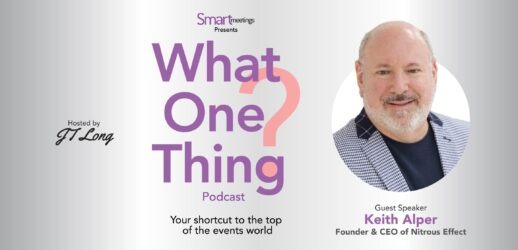5 steps to turn cold RFPs into warm relationships
It lands in your inbox—a huge request for a proposal (RFP) full of details. Time to dig in, dissect, and discover if your team has what it takes to win the work. Maybe it looks simple: you could do this in your sleep. Or maybe you’re not sure and think a conversation would help.

Conversely, you’re sending an RFP and want to ensure that it’s being considered seriously. Do you fire it off blindly or punch in the numbers to talk to a person?
A conversation will always help. The cliché “it’s not what you know, but who you know” holds true. Relationships matter on both sides of the proposal. Let’s look at the secrets for keeping connections strong in a pandemic-strained, email-focused environment.
Preparation
-
Do the Research
An investment of a few hours can pay off hugely. Especially when your goal is a phone/video call with the decision-makers, you really need to understand: Who is the client? What do they do and where? Who are their customers? What were past meetings and events like? Go beyond a web search and look at their social media channels. A single image can answer multiple questions, from location to entertainment and production.
It also gives you a basis for specific questions, such as, “I noticed you did an event in Las Vegas two years ago. Tell me what worked and what you would do differently next time.” Or, “I saw that you had everything in the main ballroom, are there other options?” Who is on the RFP committee or tasked with responding? Look them up to understand what experiences they may be bringing to the decision-making process.
Also, think about each person’s department. For example, a supply chain leader may be looking for the bottom-line cost while marketing may be looking for unique ideas to elevate the brand. The CEO may be looking at number of room nights, but the catering manager may be looking at how it will fit with other programs in house at the time. What is their communication style? Take note of the language and the images they use (or don’t use). You don’t want to mimic them, but you do want to communicate in a way that shows you understand their business.
-
Craft Good Questions
Does the RFP seem straightforward? Can’t think of good questions? Play the challenge game: get a few team members together and “challenge” each element of the RFP by asking “why,” “why not,” or “what if” multiple times. For example, what if we added $10,000 to the budget; why not do the event at night; why is this date important? This will give you insights into questions to ask. (And don’t forget the useful, open-ended question: “Tell me more about ….”)
Read More: What Really Happens to Your RFP?
Connection
-
Build Relationships
You’ve done your research, you have a list of good questions, and you’ve set up a call. Make that conversation all about connecting. People are more likely to remember a friendly, fun call over one that might display technical brilliance, but leaves them cold. Don’t be afraid to spend some time getting to know one another on a personal level.
“Conversation and connection lead to more wins.”
Submission
-
Show and Tell
Time to put the proposal together. Two key elements that can get overlooked:
- Show the client/sales team you heard them.
- Tell them about your great work. Awards and client lists are useful; case studies are better. Humans are wired for stories, so tell them a story about how your strategy worked in the past. And don’t be shy to tell them who’s a fan of your work. Testimonials show credibility.
Review
A few other fundamentals before you finish:
- Let your creativity shine. The deliverable itself is an opportunity to showcase your creative prowess.
- Fight the friction. Sometimes a cool-looking design can be hard to read. Aim for a frictionless experience by making sure the final deliverable is easy to read (organization, flow, font, colors, layout).
- Simple wins. Even though proposals sometimes need to get technical, remember most Americans read at the 8th grade level. Simple words and short sentences work best. Try tools like the Hemingway App or the readability tool in your software to check grade level.
- Proof, proof, proof. Have multiple people read it for different aspects, such as spacing and typos, clarity and key points. Involve people who have never read it before. After working on a deliverable for hours, you won’t be able to see it the way your prospective client will, so take the time for that “fresh eyes” review.
While this may look like a heap of “homework,” think of it this way: relationships and connections win now more than ever. The more you connect—by listening and learning, showing you understand them and proving you can help—the more successful your proposal will be.
With over a decade of experience, Bishop-McCann Sales Director Rameka Jennings has built her career in the meetings and events industry. Her strength in building relationships helps ensure the client’s brand strategy engages and inspires attendees to embrace growth when the meeting is over.
This article appears in the February/March 2022 issue.




